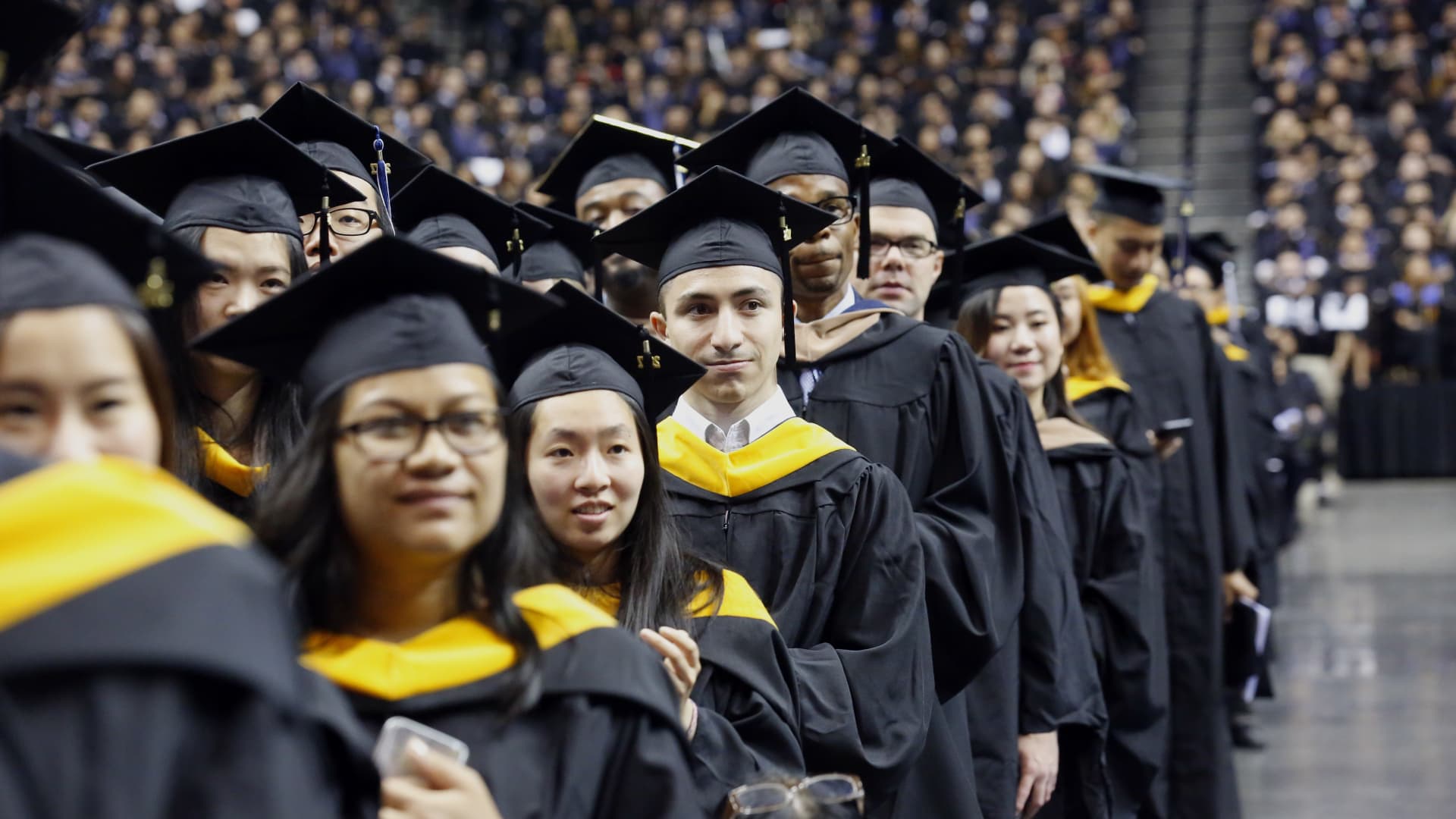In the days ahead, 125,000 graduating high school seniors will receive automatic acceptance letters from the State University of New York, Governor Kathy Hochul announced Thursday.
“Access to quality higher education is an engine for social mobility and we are taking comprehensive steps to ensure that college is affordable and accessible for students from all backgrounds,” New York’s governor said in a statement.
Nationwide, college enrollment has noticeably lagged since the start of the pandemic, when significant numbers of students decided against a four-year degree in favor of joining the workforce or completing a certificate program without the hefty price tag or zoom screen.
But a downturn in enrollment was in the works long before 2020.
More from Personal Finance:
529 college savings plans took a hit last year
4 strategies to avoid taking on too much student debt
These moves can help you save big on college costs
“The enrollment crisis didn’t start with the pandemic, it accelerated with the pandemic,” said Hafeez Lakhani, founder and president of Lakhani Coaching in New York. “This is the fuel on the fire.”
In fact, undergraduate enrollment in the U.S. topped out at roughly 18 million students over a decade ago, according to the National Center for Education Statistics.
Today, there are more than 2.5 million fewer students enrolled in college, Doug Shapiro, executive director of the National Student Clearinghouse Research Center, estimated.
Population of college-age students is shrinking
Not only are fewer students interested in pursuing any sort of degree after high school, the population of college-age students is shrinking — a trend referred to as the “enrollment cliff.”
“There’s a broad-based drop in belief or trust in higher education as an institution,” said Cole Clark, a managing director within Deloitte’s higher education practice and co-author of a recent trends report. “It’s as much of a threat as the demographic cliff.”
These days, only about 62% of high-school seniors in the U.S. immediately go on to college, down from 68% in 2010. Those that opt out are often low-income students, who increasingly feel priced out of a postsecondary education.
Steadily, college is becoming a path for only those with the means to pay for it, other reports also show.
Would-be college students are looking more closely at the return on investment as tuition costs remain high and a shortage of workers increases opportunities in the labor force — with or without a diploma.
At the same time, deep cuts in state funding for higher education have pushed more of the costs on to students and paved the way for significant tuition increases.
And costs are still rising. Tuition and fees plus room and board for a four-year private college averaged $53,430 in the 2022-2023 school year; at four-year, in-state public colleges, it was $23,250, according to the College Board.
High schoolers are more interested in career training
Most Americans still agree that a college education is worthwhile when it comes to career goals and advancement. However, only half think the economic benefits outweigh the costs, according to a report by Public Agenda, USA Today and Hidden Common Ground — and young adults are particularly skeptical.
The rising cost of college and ballooning student loan balances have played a large role in changing views about the higher education system, which many think is rigged to benefit the wealthy, the report found.
Only 45% of students from low-income, first-generation or minority backgrounds believe education after high school is necessary, according to a study by ECMC Group.
High schoolers are putting more emphasis on career training and post-college employment, the nonprofit found after polling more than 5,000 high school students six times since February 2020.
More than 75% of high schoolers now say that a two-year or technical certification is enough, and only 41% believe they must have a four-year degree to get a good job, a separate report by Junior Achievement and Citizens also found.
“A lot of students are weighing their options,” said Connie Livingston, the head of college counselors at college counseling firm Empowerly and a former admissions officer at Brown University.
“Does it make more sense to go to community college, trade school or directly into the workforce? In this economic climate, that’s attractive.”
Earning a college degree is almost always worthwhile
And yet, earning a bachelor’s degree is almost always worthwhile, research shows.
Bachelor’s degree holders generally earn 75% more than those with just a high school diploma, according to “The College Payoff,” a report from the Georgetown University Center on Education and the Workforce — and the higher the level of educational attainment, the larger the payoff.
But even while degrees deliver a strong premium in the job market, confidence in the higher education system is declining, according to Deloitte’s Clark.
“There is a lot of rhetoric about the individual with a college degree and a ton of debt and underemployed,” he said.
“You are going to continue to see this paradox,” Lakhani added. “There’s a subconscious consensus that it’s only worth going to college if you can go to a life-changing college.”
